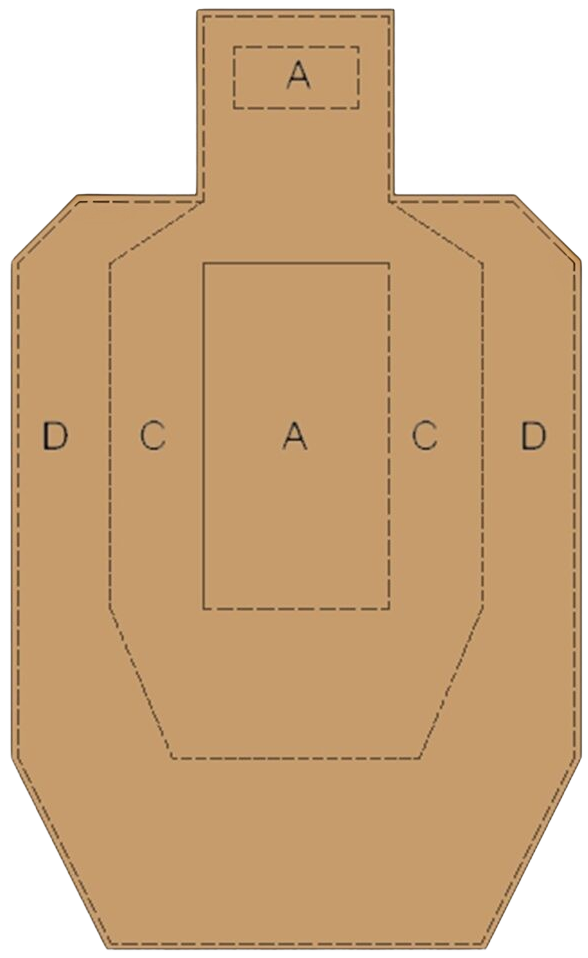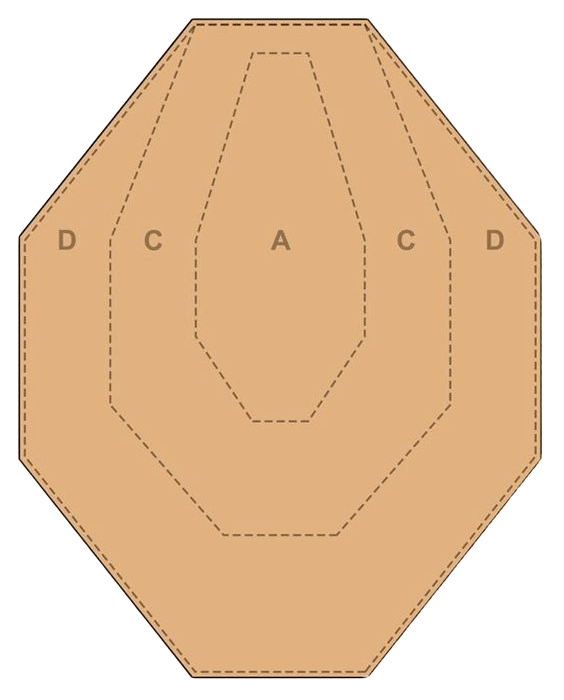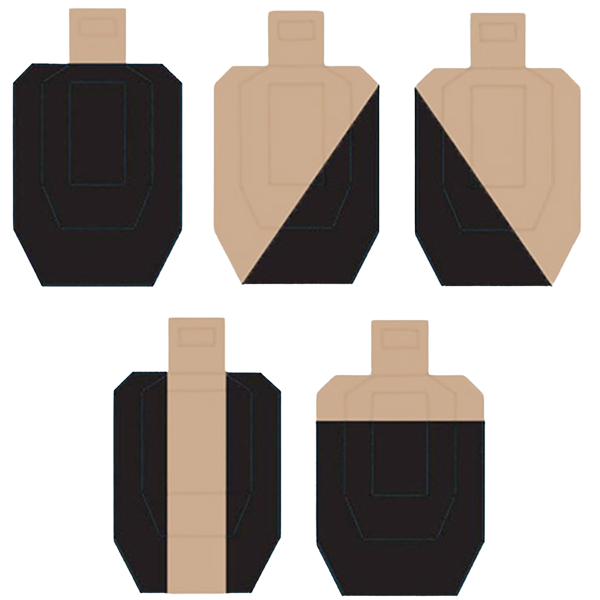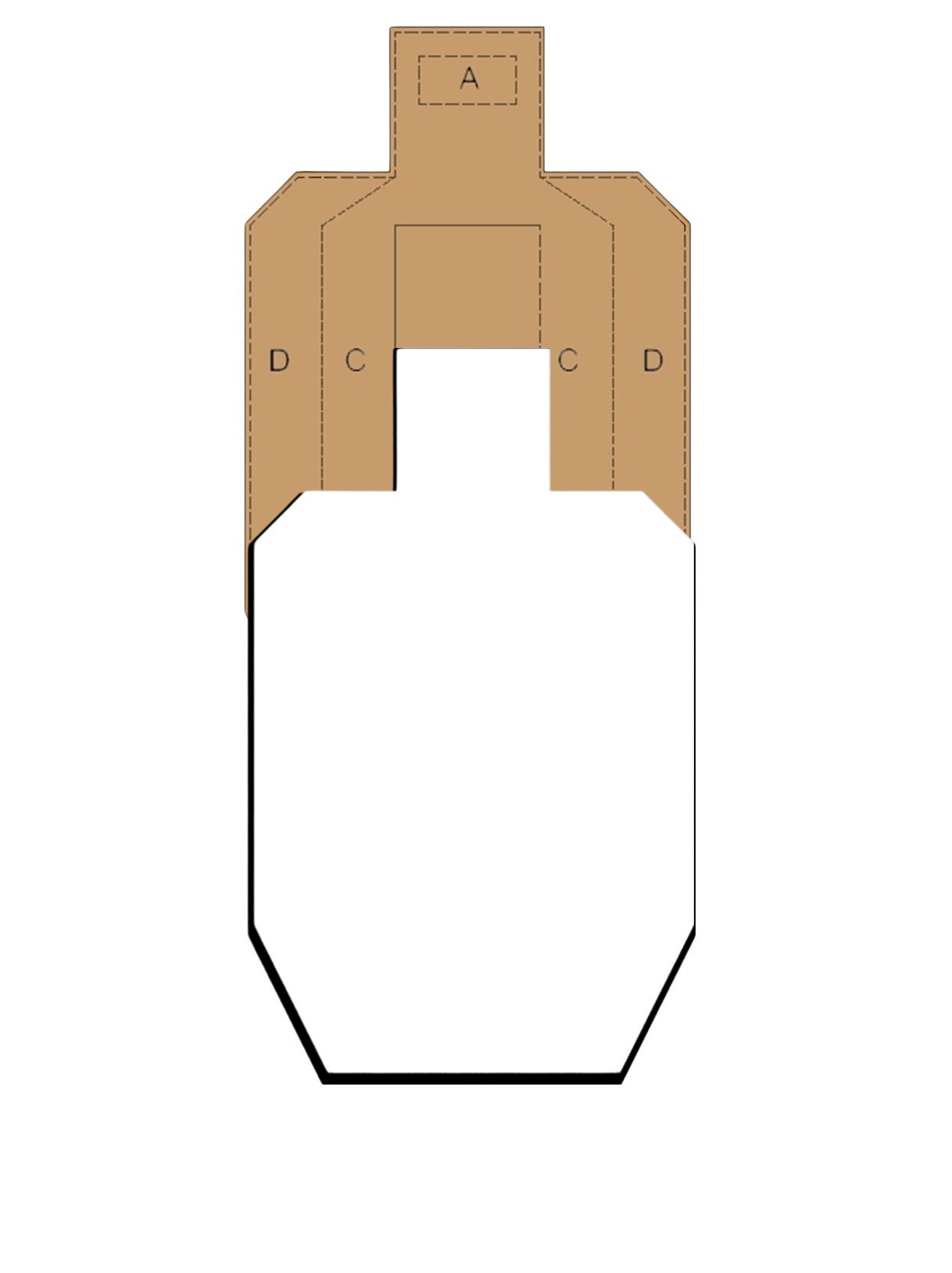Welcome back to our in-depth look into USPSA. We have already covered what USPSA is, rules and guidelines, and equipment. Now we will discuss targets, target points, and penalties.


Targets
The perforated cardboard targets above are what you will use in a USPSA match. You will see A, C, and D scoring zones. These scoring zones are worth a certain number of points based on whether you are shooting Minor or Major power factor (PF). In short, PF relates to the “power” of your particular cartridge. Steel targets can be used and are scored as Alphas when they are hit and knocked over. Minor and Major PF scoring is as follows:
Minor: Major:
A- 5 points A- 5 points
C- 3 points C- 4 points
D- 1 point D- 2 points
As you can see, scoring is more forgiving with Major PF. The choice between Minor or Major is up to the shooter, as long as your division allows both and your ammunition meets the PF minimum. Power factor is discussed briefly in my post on attending your first match here. However, the short version is if you’re shooting 9mm you will most likely be scored in Minor and if you’re shooting .40 S&W or larger, you would use Major scoring.
Virginia vs Comstock Scoring
Before we go too deep into scoring, we need to cover Virginia and Comstock scoring. If you're familiar with IDPA, you will be familiar with this concept from Limited and Unlimited scoring, respectively.
Virginia count simply means you may only fire the prescribed number of shots on each target for that stage for a total number of shots. If the stage brief calls for 2 shots on paper for a total of 20 shots, you would be penalized for any extra or makeup shots.
Comstock scoring means you may fire as many shots as you like during the stage, which is beneficial if you hit a hard cover area or no shoot and wish to makeup that shot. Comstock is the most common scoring method used. More information on Comstock, Virginia, and extra shot penalties can be found in the USPSA rulebook.
Hard Cover and No Shoots
Often in USPSA you will see partial targets, either partially painted black or covered with the white back side of a standard target. Black areas on a target represent hard cover while white targets represent no shoots. Both block the target for scoring purposes, but have some key differences.

These are examples of hard cover targets. A shot landing in the hard cover area will count as a M, or “mike” and will incur a 10-point penalty on that stage. However, you can fire a makeup shot. For example, you shoot an A followed by a hit in the black, you then fire a 3rd shot in the A as a make-up. If the stage scores the best two on paper, then your 1st and 3rd shots would be scored as 2-A. The hit in the black would be disregarded. If you had not fired the make-up shot, you would be scored as 1-A and 1-M, for -5 points total (5 points minus 10 for the M).

This is a common setup for a no shoot (NS) partially covering a standard target. The key difference here is what a hit on a NS means for your make-up shots. During a Comstock course of fire, you may fire the make-up shot from our last example. However, you will still incur a -10 penalty. So, firing a shot in the A, followed by NS, and a make-up in the A will yield net zero points (10 points for the 2-A minus 10 for the NS). Any hit within the scoreable area of a NS will count against your score. Stay away from no shoots.
More information on target penalties and procedural penalties can be found in Chapters 9 and 10 of the rulebook.
And that’s Part II! Reach out if there are any questions.
Current USPSA rules (as of this writing) are available at the link below.
USPSA Rulebook: https://uspsa.org/viewer/2024-USPSA-Competition-Rules.pdf
